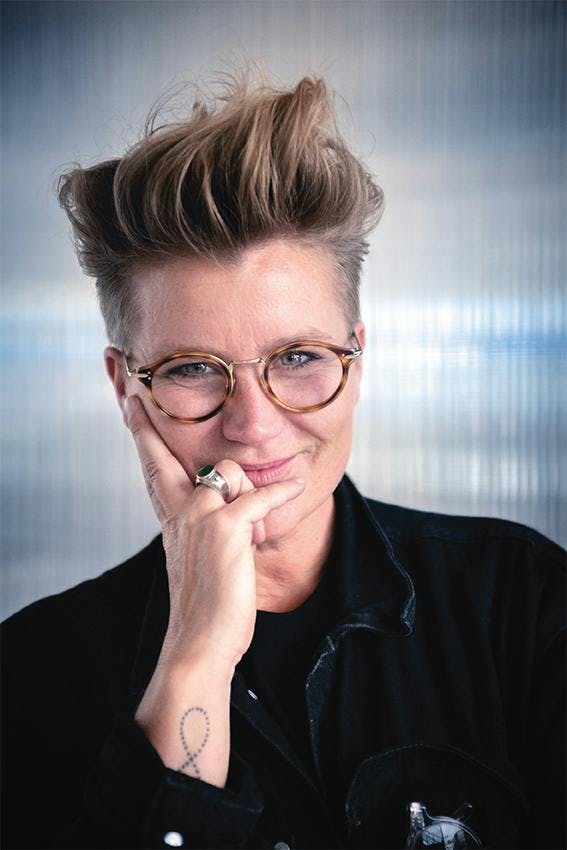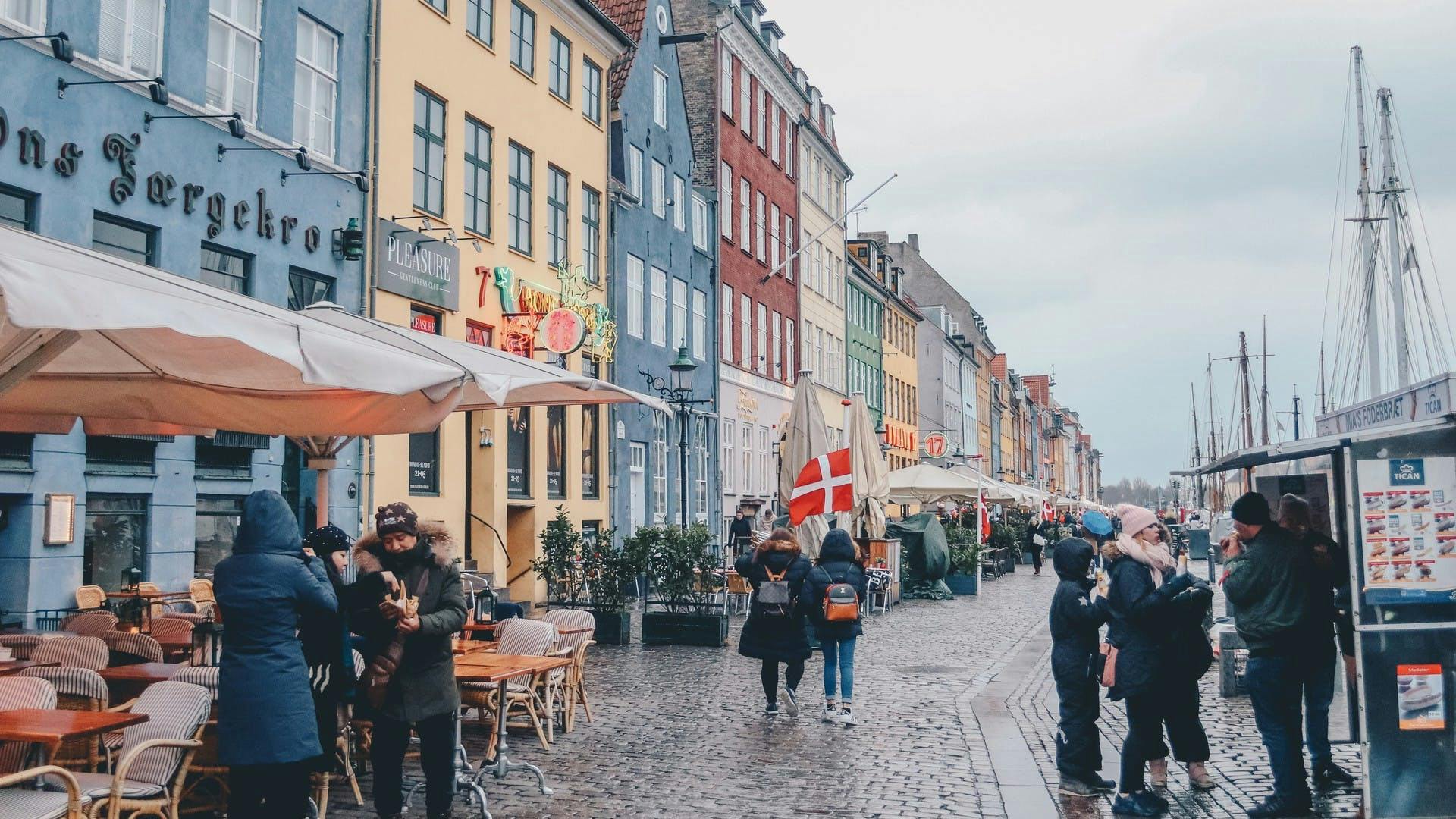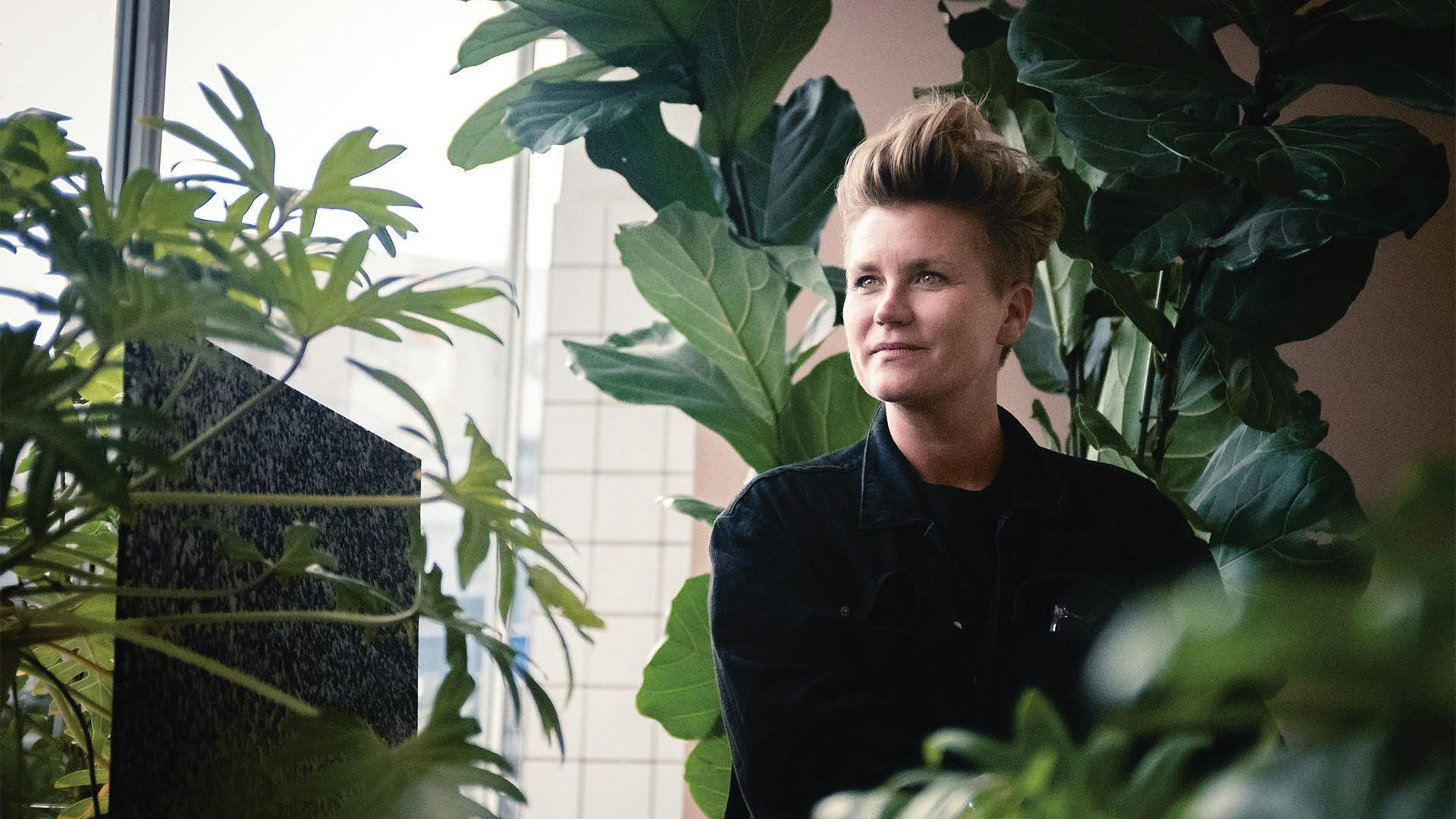Meet the founder whose innovation lab was born after she pitched it to the CEO of IKEA
anish entrepreneur Carla Cammilla Hjort cofounded creative hub, SPACE10, with the aim of enabling a better, more meaningful, and more sustainable life for many people. But the hub wouldn’t exist today if it weren’t for her pitch to IKEA several years ago.
Since childhood, Carla Cammilla Hjort’s career has revolved around the creative industries.
The Copenhagen native was a professional dancer, a DJ and an international music producer. She’s also the founder of Trailerpark Festival and the founder of ArtRebels, a creative studio and global community for a curated selection of very talented creatives.
In her early twenties, Carla traveled the world for four years, after which she lived in an ashram in India where she became a meditation teacher and body therapist.
Nowadays she’s the cofounder and vision director of SPACE10, an experimental design lab based in Copenhagen that’s on a mission to create a more sustainable way of living.
Late last year, Startup Guide had a chat with Carla to find out more about how SPACE10 came to be, challenges she’s overcome along the way, and her thoughts on entrepreneurship in the Nordic region.
How did the idea for SPACE10 come about?
After five years of running ArtRebels in Copenhagen, I got a phone call from IKEA asking if I would do a talk for their executive staff. The talk would be about how to build creative communities and design new business models. I said yes, of course.
During the talk, there were ten people in the room. One was the director of design, and another was Torbjörn Lööf, the CEO of Inter IKEA Group. He seemed to like what he saw and heard, a lot. At the end, he asked me one last question: “What would you pitch IKEA if you worked for us?”
At that time, IKEA was just a furniture or design company to me, and I said what immediately came to my mind, “We would probably pitch you a concept to design a collection for young people who live in small spaces.”
A week later, I received a call from Torbjörn, and he told me that it was very inspiring to meet me, and that the idea I’d pitched fit their new strategy well. They were going to start a new limited collection, a limited strategy, and we could be the first collaborators in this new strategy.
Within three months, I had a contract to design a collection. The collection was called Bråkig, and it came out one year later. It was sold out in all markets globally. For the first time in a long time, there were lines outside of IKEA stores.
The fact that the CEO of one of the biggest retailers asked me if I wanted to make the world a better place… I was so happy.
The CEO called to congratulate us on the success. Then he said, “I want to create a better IKEA for the future. I have no plan and no agenda, but can you just think about that, and if you get an idea of how you can support the mission and vision, please get back to me.” I was thrilled by that call.
The fact that the CEO of one of the biggest retailers asked me if I wanted to make the world a better place… I was so happy. I basically stopped all other projects for two weeks and brought a colleague to work with me.
We went to what we called the ‘war room’ and began brainstorming. What we stumbled upon was that IKEA was creating a better everyday life for people – this was their vision. For me, this was the golden key that could unlock everything. A company can never argue against its own vision.
There’s a potential that any business will be disrupted over the next ten to twenty years. For IKEA, it could be by Amazon or by smaller furniture brands such as Caspar. There are many different ways for potential disruption to happen. What we came up with was that from now on, IKEA had to live up to their vision.
Be very focused on your leadership skills because this is important to your success.
We wanted to propose the set-up of a future living lab, entirely external to IKEA that explores their vision beyond home furnishings. We wanted to do research, starting with market changes and trends happening today, and explore what could make sense for a company like IKEA to move into in the future.
When I pitched the CEO and the board, I told him I needed three years to show him anything of value that could be a deliverable. After the six-hour pitch, we got a high-five and a hug, and he said yes to the three years. That was the beginning of SPACE10.
Once we were set up, we spent the first year traveling around and meeting all of the stakeholders in all of the businesses in IKEA. What we realized was that they're in property development – they build homes, they have an investment arm, and they have IKEA foods, which is huge by the way. We realized we could develop new ideas within the future of food, housing, energy, mobility and so on, and we would still have someone to pitch these ideas to within the IKEA ecosystem.
Today, a lot of our labs in SPACE10 are connected to this ecosystem, but we’re free to explore what's possible beyond today and to design new businesses that IKEA would potentially own under a sister brand label. It hasn’t happened yet, but it might happen in the near future. The three years started four and a half years ago. We extended the contract for another two years, and now we’re talking about more in the future.

Carla Cammilla Hjort. Photo: Startup Guide
What was an early challenge you had when starting up SPACE10, and how did you overcome it?
I found this space in the meatpacking district, and the landlords wanted us to rent it. We’d made this big proposal and realized that now we needed more people, and it was going to be a lot more money than IKEA had first committed to.
Torbjörn really liked it, and he said, “Let’s do it.” So I started negotiating with the municipality, and we were working 24 hours a day, seven days a week to be ready. The day before I was supposed to sign the lease, I got a call from Torbjörn, and he said, “Carla, I’m sorry, but I don’t think we’re ready to set up this space; it’s premature.” I told my team, and they were almost crying – they were so depressed.
I went home and said to myself, “I need to fight for this.” I wrote down how I felt, that I truly felt we were on to something with SPACE10, and that to get this space in the meatpacking district was a once-in-a-lifetime opportunity.
So I wrote him a mail that said, “I’m sorry, but I think you’re making a mistake, and I think we should take this chance.” I argued my case and then I went to bed. The next day, he called me and said, “Thank you for your mail. I respect that you fight for what you believe in. So let’s do it and see what happens.” He went along and started to support it, and the board approved it. It was 24 hours of extreme depression and anxiety.
You need to be adaptable and sometimes fight for what you believe in.
This is more of a symbolic story, that you can have grand plans and everything can be running smoothly and on track, and something unexpected can happen and change everything. You need to be adaptable and sometimes fight for what you believe in.
In the past four to five years at SPACE10, we’ve had some bumps in the road where we’ve been doing a big project and something happens, for one reason or another, that isn’t part of the plan. For a moment, it feels stressful and uncomfortable, but we’re very good at adapting and finding alternatives.
We always somehow manage to get through to the end. It’s about being creative. You should always be creative when trying to overcome challenges.
What’s one piece of professional advice you’d give to people who are just starting out?
Find your deeper purpose, take responsibility for what you bring into the world, and make sure you’re passionate. Otherwise, you'll give up because it's hard.
I would also say be very focused on your leadership skills because this is important to your success. Never stop developing them. If you still want to start a business, make sure you find a leader. Make sure that where you’re weak, your team will make you strong. Hire a diverse team who have different strengths and personalities, and don’t hire copies of yourself.

Copenhagen. Photo: Unsplash/@ethanhjy
What are your thoughts on the current state of entrepreneurship in the Nordics?
My feeling is that there’s a lot of fascinating stuff happening in the creative scenes. I feel the architecture and cultural entrepreneurship scenes are growing in a positive way.
A few years ago, everyone was doing a digital app. That whole hype thing needs to slow down. I hope that it's changing and that people who work with digital and tech will start doing more cool and meaningful projects – using their talent and creativity to make a positive difference in the world.
In your opinion, what are the strengths and weaknesses of launching a startup in the Nordic region?
A strength is that we live in a country where you have this social security system that can always save your ass. If everything fails, you can still go back on the welfare system and not end up on the street. That’s a lot of security others don’t have, but it can also be a negative thing.
We don’t have a lot of entrepreneurial cultural history in Denmark. The United States was built on the American dream. Entrepreneurship is in the DNA of America. It’s not the same way here. We have a lot of rules and regulations – some are good, but some are unnecessary. I think the Danish government is trying to find ways to make it more accessible and more attractive to businesses.
This interview was originally published in our Startup Guide Nordics book in 2018.
Main photo by Startup Guide

